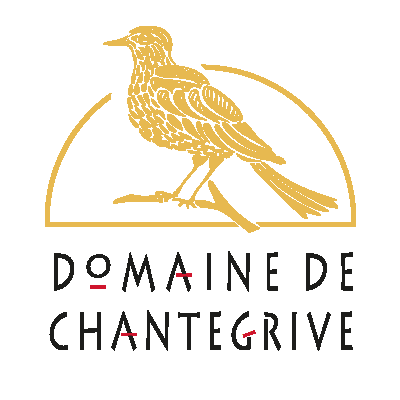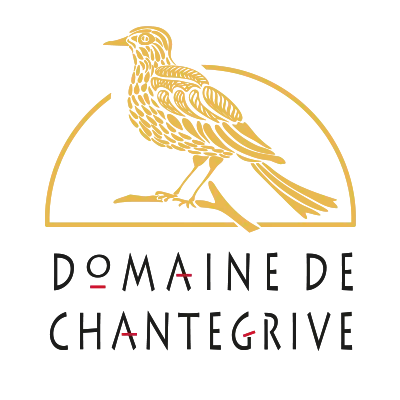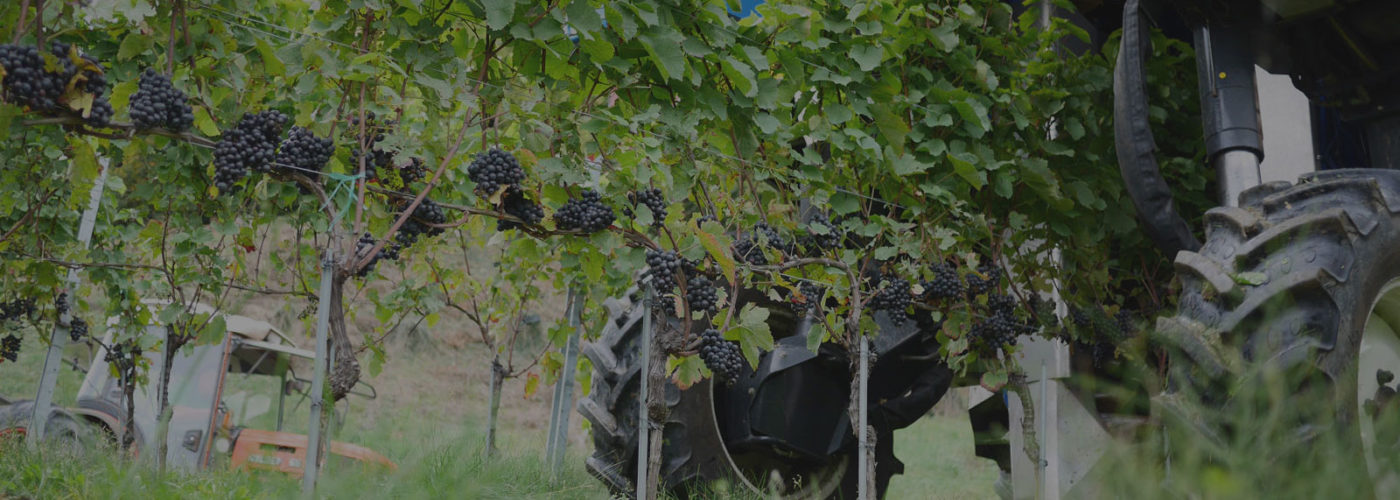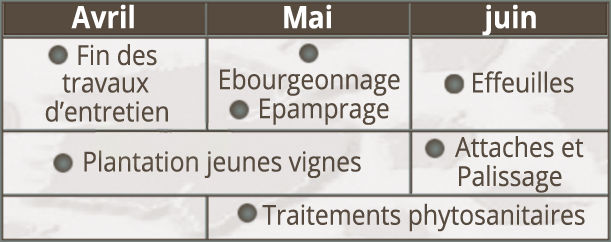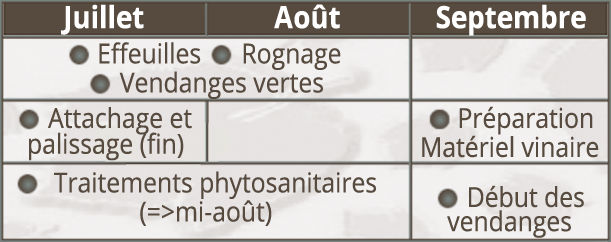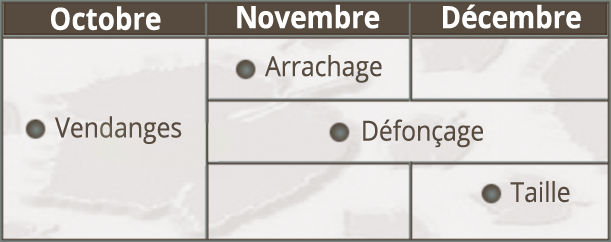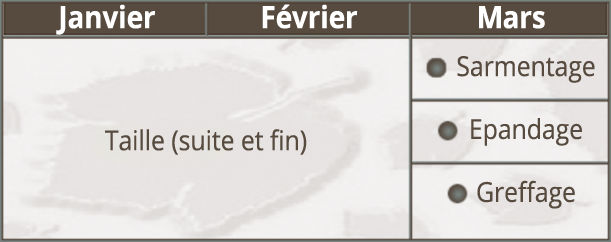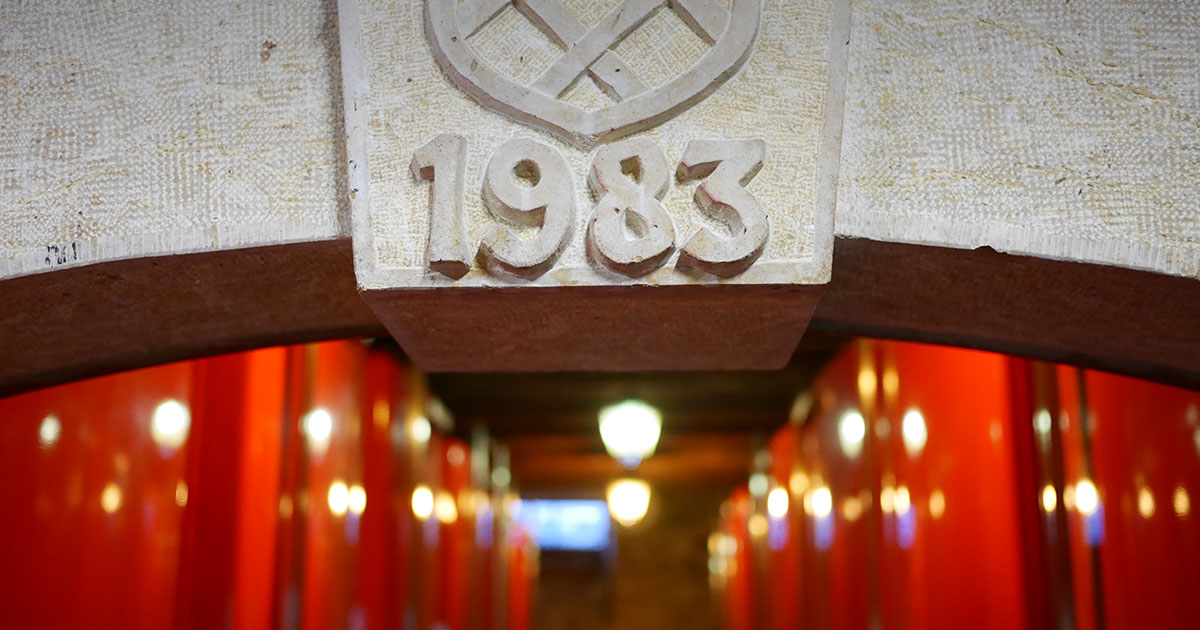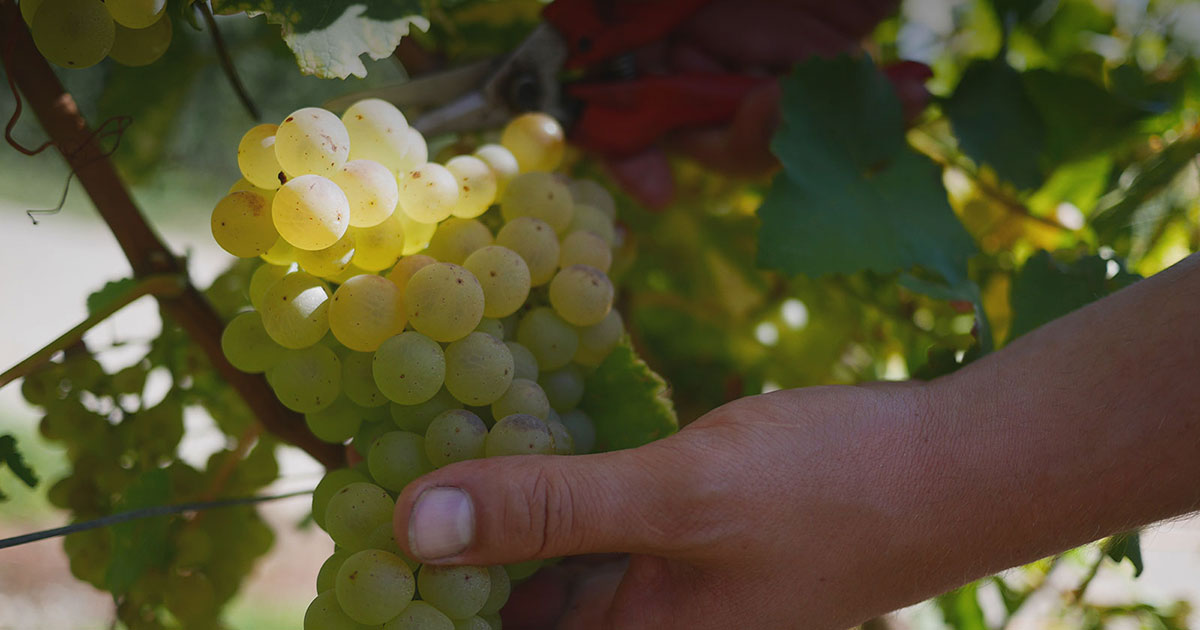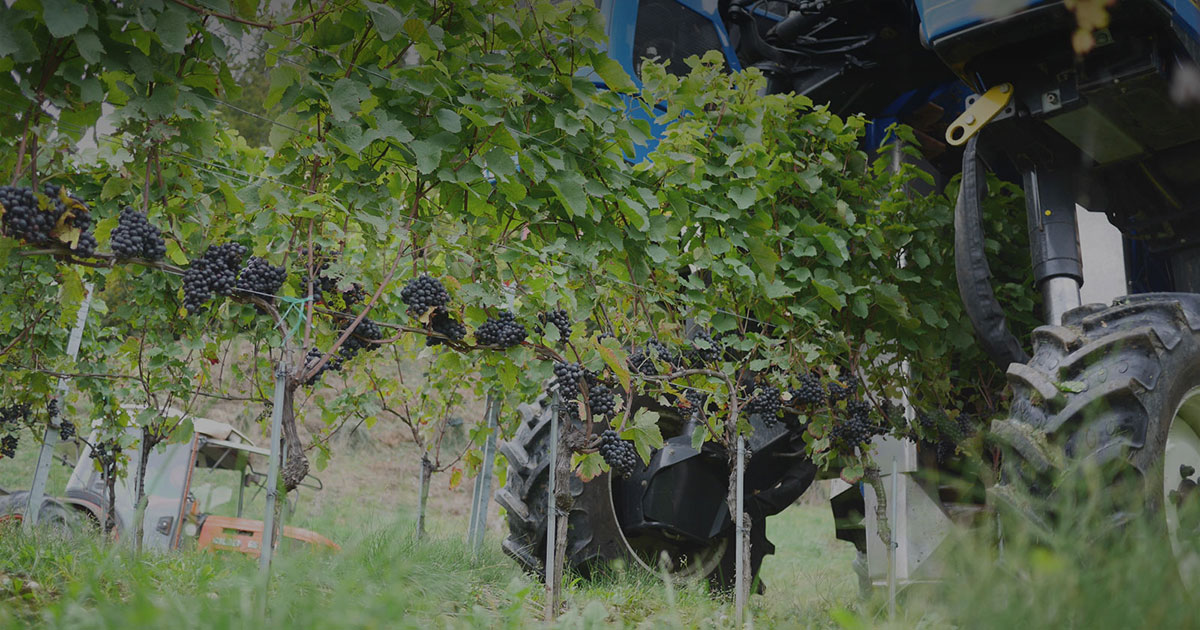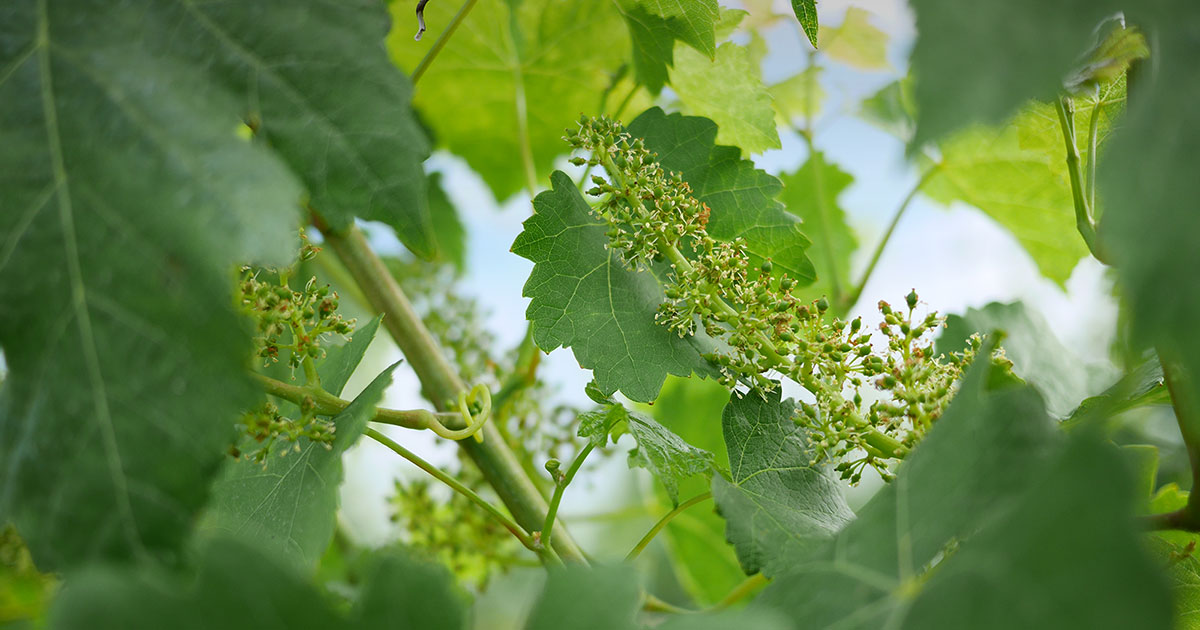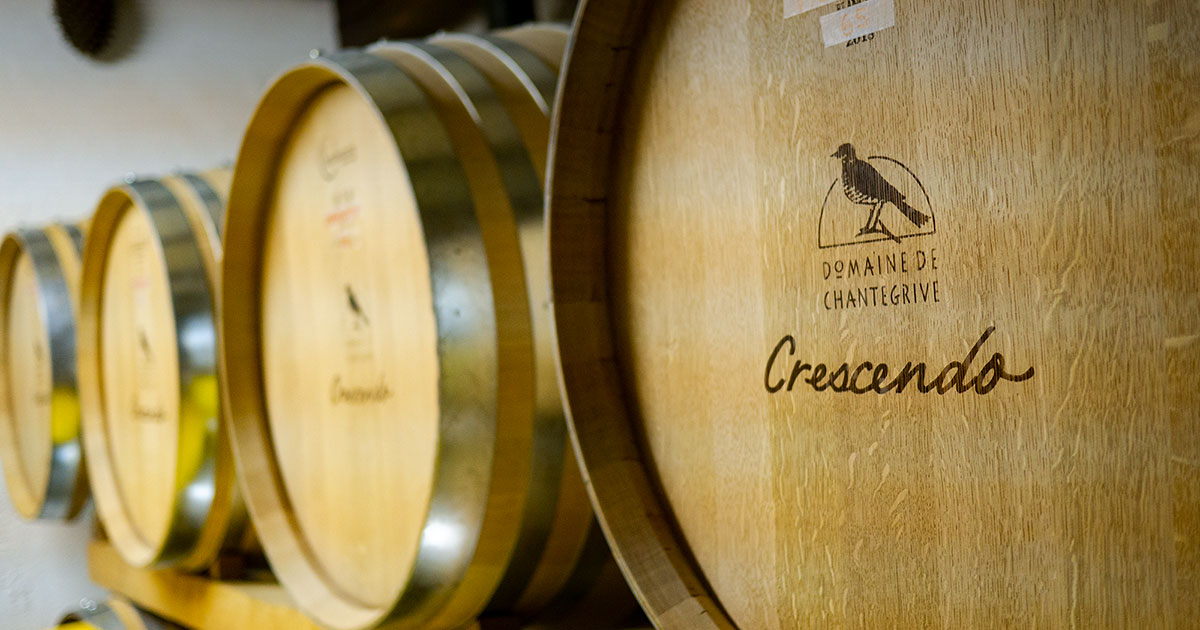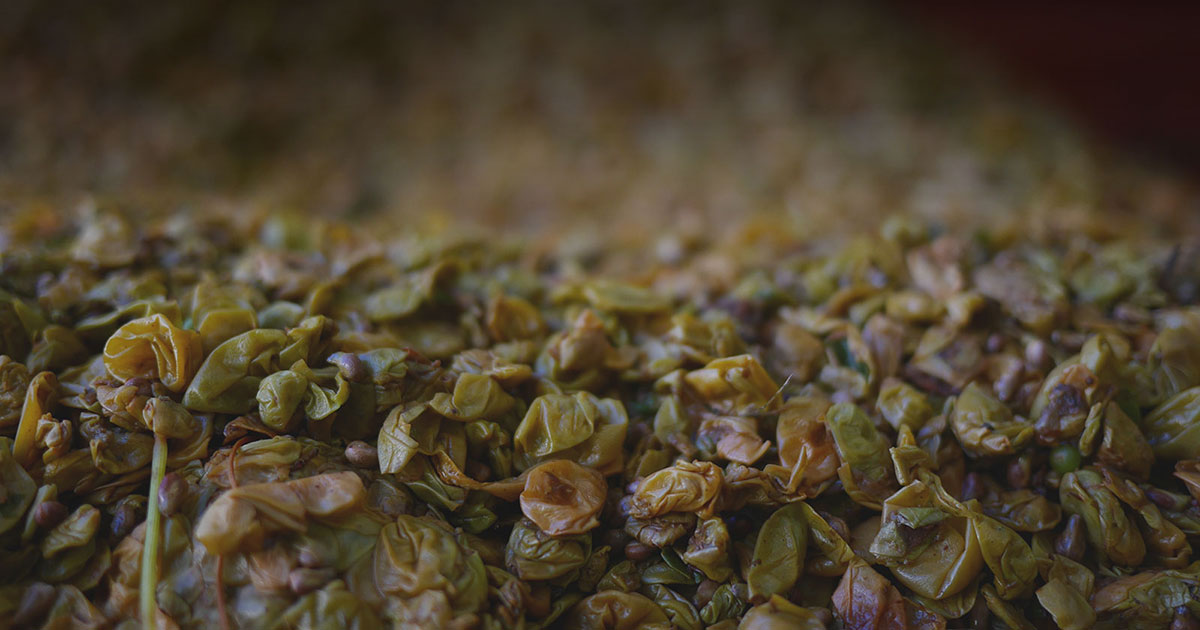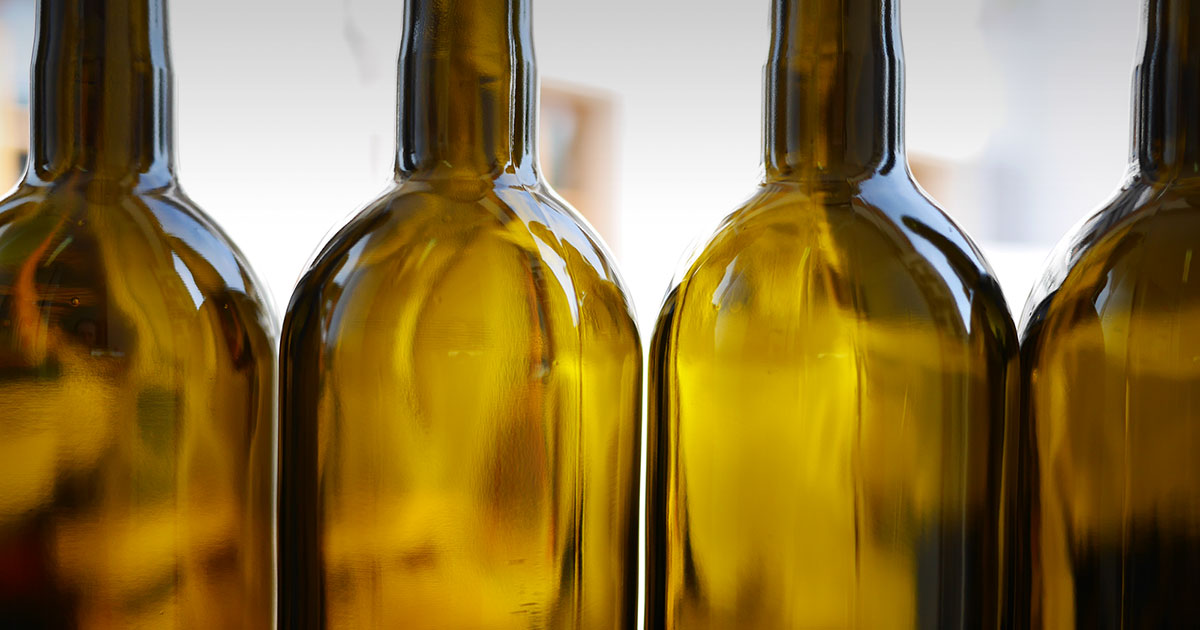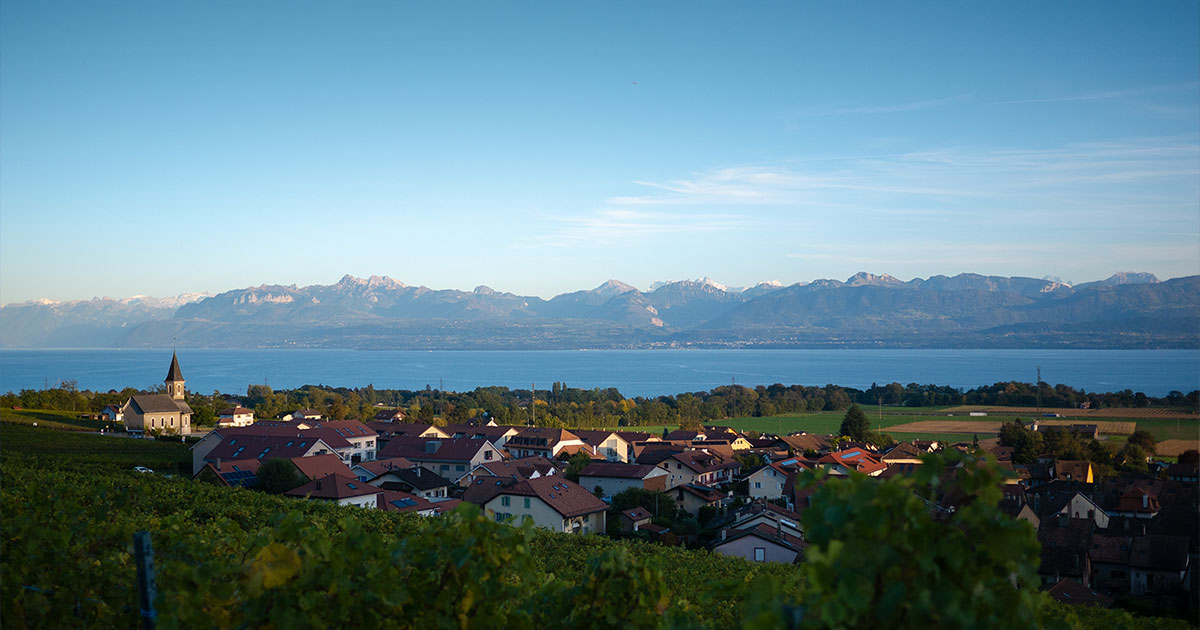Vineyard works
Vineyard works in La Côte region
Vineyard works demand plenty of manuel tasks all through the year. There are various moments in which skilled labour is needed, like the period of disbudding, the period of vine training, the period of stripping excess leaves, the period of green grape harvest, period of harvest, period of pruning during wintertime.
Contrary to many other wine-growing countries we spend a lot of time stripping leaves to allow a maximum quantity of sunlight on the grapes. In warmer climats they’re left to protect the grapes.
Vineyard works
maintenance
The spreading of the fertilizers at the budding and the plowing completes the maintenance work.
Planting
Time to prepare our slopes when the April’s sun comes out. New vine stocks are planted in a well prepared soil. This stage needs a lot of labour and materials (stakes, wires etc.).
Full production will be achieved after 4 to 5 years.
Disbudding
Unwanted buds are removed by hand as to leave only six shoots.
Shoots who won’t bear fruits are being removed on the older vines to avoid sapping of energy. Starting in May. In french this process is called l’épamprage.
Phytosanitary treatment
During the maturing period of the grapes it would be harmful not to protect them.
Especially around the period of blossoming, as well as at the period of the enclosure of the bunches, the wine grower will treat some diseases like grey rot, powdery mildew and downy mildew.
After half of August no sprayings are used any longer.
Insecticides
Sustainable agriculture including organic products is used to control insects.
The main purpose is to disturb the evolution of eggs and larva from different species.
Effeuilles
To assure a maximum of sunshine on the bunches and to reduce rotting, leaves are being cut away. We remove suckers that develop in the crotch joint of two branches. They won’t bear fruit and will take energy away from the rest of the plant.
Vine training
As members of the Vitis family, grapevines are climbing plants that do not have their own natural support like trees. While grapevines have woody trunks, the weight of a vine’s leafy canopy and grape clusters will often bring the vine’s cordon or “arms” down towards the ground unless it receives some form of support. That’s why new shoots are tied up to training wires.
Vineyard works
Green harvest
A green harvest is the removal of immature grape bunches, typically for the purpose of decreasing yield. In French it is known as a vendange verte.
Preparing the winery
Half to end of August, the bunches continue ripening and the wine grower stops working in the vineyard and can spend his time on preparing the cellar, ensure the cleaning of winetanks and the maintenance of winery equipment.
Beginning of harvesting
It’s a complex process to decide when to start harvesting. In theory, harvest can begin 110 days after blossoming, but that’s in theory ! There are many other elements that will determine the right moment.
And this is where the know-how of the wine grower is so important.
Harvest
According to the traditional way, the grape bunches are
cut, sorted and collected in boxes by our harvesters.
These boxes are gathered by the ‘brantars’ and driven to the winepress.
Uprooting and renewal
The oldest vines are replaced every year by new ones.
The arable layer is ploughed in depth to be aerated and the rests of roots are being removed.
Soon after the harvest, unhealthy vines are replaced by new ones.
Pruning
Because of the way grapevines grow and produce fruit, growers must prune annually. Fruit is only produced on shoots growing from one-year-old canes. Therefore, healthy new canes must be produced every year to maintain annual production of fruit.
Vine shoot cutting : sarmentage
Pruned shoots (in French : sarments) are chopped up on-site, which returns organic matter to the soil.
Fertilization
A vineyard stays in place for at least 30 years which means that it needs a regular supply of mineral and organic elements. Fertilizing allows for healthy growth of the vines, its fruits and protects it against diseases.
Grafting
This is the process of placing a shoot system (a scion) of one variety or species on the root system (a rootstock) of another.
